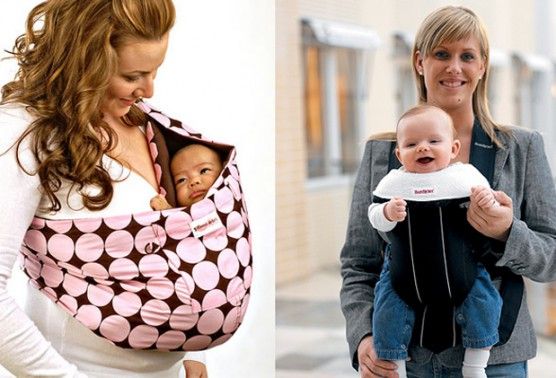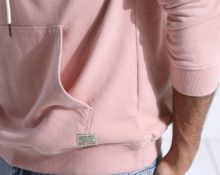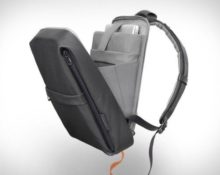It is important for parents that their child grows up healthy, both physically and psychologically. There is attachment theory that many new mothers now rely on. According to this theory, in order for a child to grow up calm, feel comfortable, and develop, it is important for him to spend a lot of time in contact with “his adult” in the first years of his life, to feel his warmth, protection and smell.
But carrying a child in your arms all the time is not easy. It is physically difficult because the baby is gaining weight every month, and also does not allow him to do other things, since his hands are full. In order to make this task easier for moms and dads, various types of carriers have been invented that are attached to an adult and free up his hands.
Types of carriers

Nowadays you can find a lot of such carriers on sale - slings, kangaroos, ergo-backpacks, hipsits. Each type of carrier has its own characteristics. The most important thing is that the carrier fulfills its function of helping the adult and does not harm the child. Let's compare 2 types - kangaroos and ergo-backpacks.
Kangaroos

These devices appeared the very first. In the 90s, mothers began to actively use them. And many people still use it today. They are a design with a rigid back and thin straps that snap into fastex locks. Kangaroos often do not have a hip belt. This type of carrier is intended for children up to 12 kg, that is, up to about 1 year. You can carry your baby facing you or facing away from you.
Ergo backpacks

Ergo backpack has a soft back, a belt and wide straps. You can only carry your baby facing you. The maximum weight of a child stated by manufacturers is 25 kg. That is, the ergo-backpack can be used for approximately 5 years.
What are the differences

If you do not study the characteristics of these models in detail, it may seem that they are similar. But you need to figure it out, because the right model is the health of the baby and the comfort of the adult. Manufacturers of kangaroos improve their models and often add certain ergo characteristics to their models, for example, a hip belt. But there are clear differences between them:
- Back. In the ergo it is soft and stretches along the contour of the baby's back. A kangaroo has a hard back. This backrest, according to orthopedists, is not intended for a poorly formed spine.
- Position of the legs. Take the child in your arms and notice how he holds his legs. He bends them at the knees and tries to wrap them around you. How does he sleep? He spreads his hips and pulls his knees up. Ergo supports the legs in exactly the position that is natural for the child. In this position, you don’t have to worry about joint dysplasia. And in a kangaroo, the legs are in a hanging position. This is uncomfortable for both children and adults. An adult touches the baby's legs while walking.And the child feels discomfort in the perineal area, which bears the entire load.
- In order for mom or dad to move and bend freely, the child must be pulled towards you as much as possible. This function is only available in ergo. And in a kangaroo, when moving, the child shifts first to one side, then to the other when bending and turning.
- These two types of carriers distribute the load on the adult's back differently. In the ergo, the lower back does not feel tension due to the belt and wide straps. It will not be possible to carry a child in a kangaroo for a long time; the back will get tired from overexertion.
- Kangaroo manufacturers do not recommend using it for more than 2 hours a day and be sure to take breaks every 20-30 minutes. But in ergo there are no such restrictions.
- The child can fall asleep while in his carrier. It is important that he feels comfortable sleeping, even if the adult is on the road at the time, for example. For this purpose, the ergo has a special hood that secures the baby’s head. The head does not wobble like in a kangaroo.
Pediatricians, orthopedists, pediatric massage therapists and even early development psychologists speak out against “kangaroo” backpacks in favor of the “ergo” model. What benefits do they highlight?
- In an ergo-backpack, the baby is in a natural position - his legs are bent and he hugs the adult a little with them, his back is supported in a C-shaped bend, his head is supported by a special hood.
- The baby's weight is distributed evenly on the lower thigh and buttocks, and not just on the perineum, as in a kangaroo. This means there will be no rubbing or irritation.
- The design of the ergo-backpack allows you to feed the child without pulling him out. Whereas in a kangaroo carrier this cannot be done without unfastening.
- Even wearing a kangaroo facing away from you is not recognized as a plus.At an early age, a child does not need to consider the people around him and the environment around him. He needs to feel comfortable and safe, that's the main thing. And it is the position facing the adult that provides this feeling of protection.
When choosing a device for wearing a child, pay attention to the quality and characteristics of the product, and not to the name. The words “kangaroo” and “ergo” can be present in both versions.


 0
0





